
Photo by Juozas Kamenskas
A group show of works by twenty-one artists titled Notes on Tomorrow opened on June 17th at the Meno Forma gallery and the Ars et Mundus art incubator in Kaunas, organised by the CreArt network. The exhibition presents a series of alternative visions of the world which inscribe art and culture into a list of social systems such as spontaneous communities and voluntary, total, or bureaucratic organisations. Art is best at generating perception, one of society’s most important traits. This is the belief of the exhibition curator and professor of the Catholic University of Portugal, Luisa Santos, who has brought together artists and artworks representing a wide range of European countries, cities and cultures.
Jogintė Bučinskaitė: The exhibition reflects the Luhmannian idea of art as a social system. The German sociologist Niklas Luhmann once argued that art, considered a social system, was self-programming. Set against obligatory explanations of art, his constructivist analysis, led to a perception of culture as a ‘given’, and proposed that culture is itself a self-describing system with a stable internal identity developed by its participants. His approach, however, is now more than two decades old, so what is still relevant and necessary to address in this exhibition and what is its main weakness in today’s context?
Luisa Santos: In keeping with Luhmann‘s larger project, art, like the law, economy, politics, or science, constituted a specific social system of modernity. In other words, the specific semantic theme of art is the relationship between the non-social domain of conscious perception and the social domain of communication. The function of art would thus consist in integrating what was in principle incommunicable — namely perception — into the communication network. This might seem to be a passive role, but perception is, in fact, of utmost importance in society. At its best, art shows the world that surrounds us. This is not new; art has been showing the world we live in since its inception. In my opinion, it will always be relevant to look at the world and portray it as it is under different perceptions, as this leads to further questions and more potential proposals for the future. This seems particularly important in our times, which are characterised by conflict, crisis, uncertainty, and potential changes.
Do you not think this categorisation of ‘art as a social system’ produces a closed ‘art for art’s sake’ perspective, and simultaneously establishes the political possibilities of art? What are these possibilities?
If we put ‘art as a social system’ in the realm of perception, and if we see perception as an active voice (as exposed in the answer to your previous question), it certainly falls into the political sphere, which is inherently different from the idea of ‘art for art’s sake’, a term coined earlier in the nineteenth century by the French philosopher Victor Cousin. It expressed the idea that art had its own value as art, and that artistic activities were their own justification without warranting any further explanation or rationale, that art could be morally revolutionary and did not need moral justification. The diversity of interests that we are seeing in art today represents a shift away from the academia, the introversion of modernism and the belief of ‘art for art’s sake’ in the same trend of relational aesthetics (Bourriaud, 1998) and social-sculpture, coined by Beuys in the 1970s, which showed the surge of art towards the social realm.
Who, or what, could perform a critique of culture from the outside if we still keep Luhmann’s ideas in mind?
To answer your question, it might be useful to briefly look back into the history of cultural studies. The University of Birmingham Centre for Contemporary Cultural Studies and the Frankfurt School saw culture as a mode of ideological reproduction and hegemony, in which cultural forms may have had a role in shaping ways of thought and behaviour that stimulated individuals to adapt to the social conditions of capitalist societies. With the postmodern turn in cultural studies, there was an increased emphasis on the audience and how audiences produced meanings, and how cultural texts produced both popular pleasures and forms of resistance. Looking at this historical background, and keeping in mind that we all have our own cultural references and are part of the cultures we live in, I would say that it is a challenge to perform a critique of culture from the outside as we are all, to some extent, looking from inside.
The exhibition title Notes on Tomorrow implies a multitude of spare futures, and maybe even mobile futures, which are written somewhere in the margins. What kind of notes does this show contain, and what do they address?
The works of Notes on Tomorrow come together in a series of dichotomies. Firstly, the visual formalisation of the contrasts between history, fiction and memories; the relationship between the search for the new and the nostalgia for a time that has passed; the unsettling relationship between humans and nature; networks of information, stories and seemingly random events; and, finally, the contradiction between known and unknown, translated by the desire to discover, to change to something beyond the horizon and, paradoxically, the need for familiar refuges.
These dichotomies are not about offering definitive answers for contemporary society’s challenges but more about looking into a series of questions, observations and experimentations. In this way, these representations reflect the ambivalence of human relations in contemporary society.
Speaking of time, it is also an essential dimension of Luhmann’s social theory. For Luhmann, time is ‘the interpretation of reality with regard to the difference between past and future’.[1] Luhmann’s analysis makes it very clear that political time is not the same as economic or cultural time. What kind of cultural time emerged in the exhibition? How do the times established by artists differ from each other and from the time of other social systems?
According to Luhmann, time is a symbol that works as an indicator to show that whenever something specific takes place, something else is also occurring, meaning there is no single action that can achieve full power over the conditions in which it happens. Contemporary art does not reflect one single time, but a multiplicity of times that we are living in.
If we keep looking back to Luhmann’s idea, only art plays its function in society in the same way that the other social systems have their own roles. In other words, in the same way that each social system has its own function, and each artist has its own cultural reference (not only because they come from twelve different countries), the idea of time and what it encompasses must also differ from artist to artist.
What is your main aim as a curator in this show — to speculate about future scenarios or to comment on present-day processes?
I believe these are inter-related: observing, reflecting and commenting on the present allows for a greater perspective on possible futures.
How did you select the artists for this exhibition? Do the artists’ local and individual experiences correlate with each other? Did you want the artists’ works to resonate with any contemporary global contexts?
When I started working with CreArt, I was asked to write an idea for an exhibition before seeing works from the artists in the network. I then received about ninety portfolios from twelve different European cities in the CreArt network including Arad, Aveiro, Genoa, Harghita County, Kaunas, Kristiansand, Lecce, Linz, Pardubice, Valladolid, Vilnius, and Zagreb. I selected one or two portfolios from each of those cities, twenty one in total, after the artists in the network submitted their portfolios. The (formal and conceptual) qualities of the works, processes, creativity and, above all, the relevance of their themes were key aspects for my final selection. Looking through their portfolios as I received them, I could certainly see relationships in the conceptual and formal levels, especially in the work of artists from similar cities and countries. I preferred to look at the art and see what it was telling me rather than wanting it to fit a preconceived idea or context. That is why I wrote an initial idea in which a wider umbrella of conceptual works could be placed.
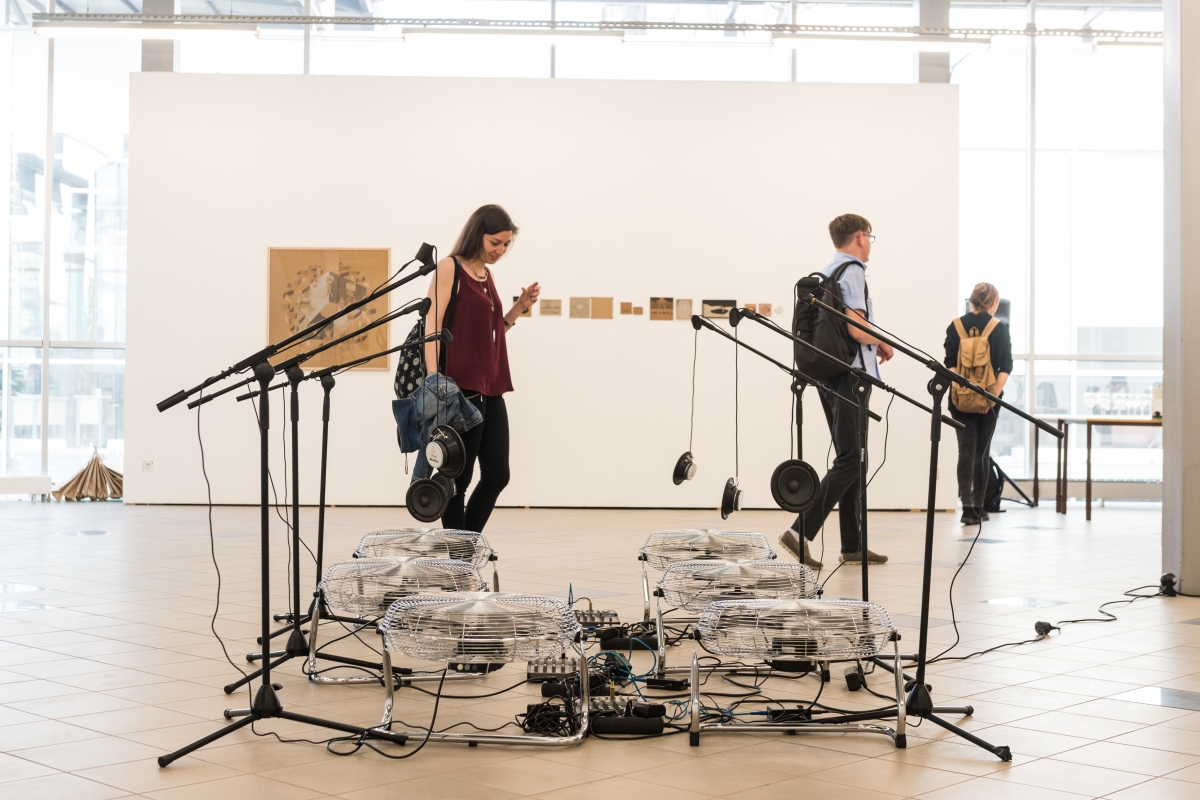
Photo by Juozas Kamenskas
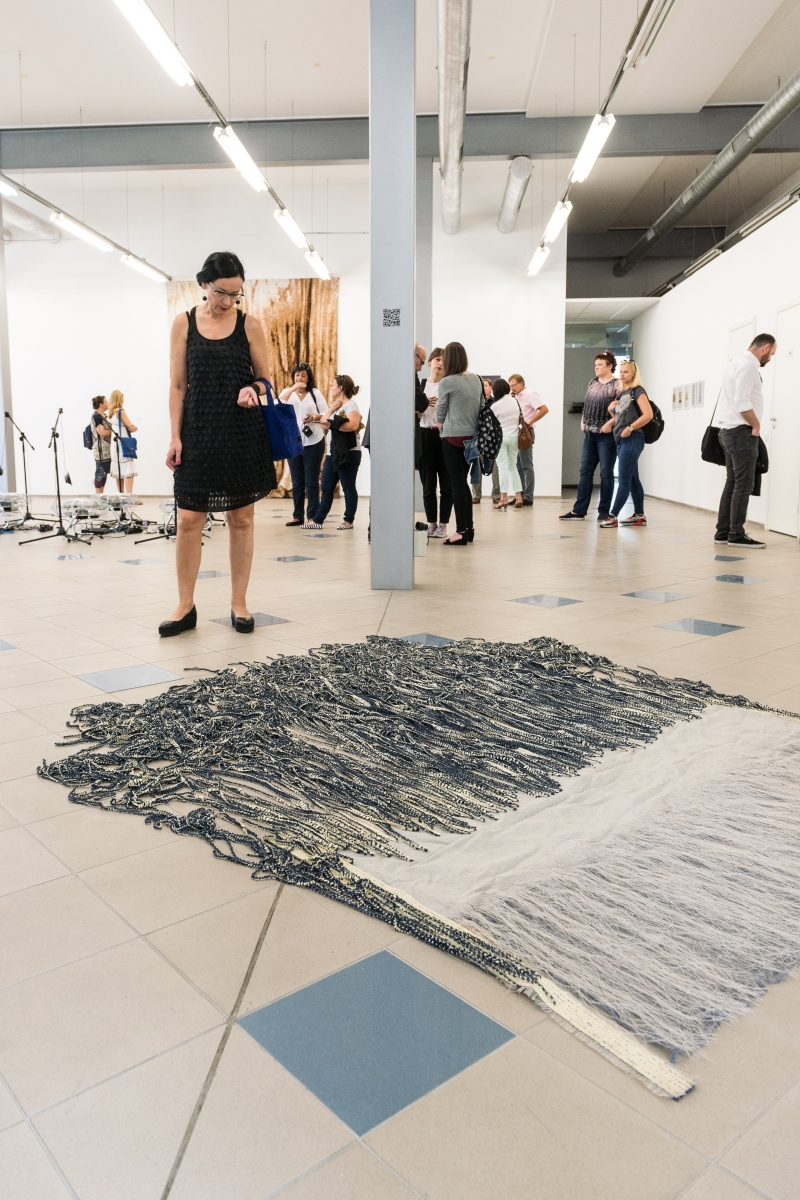
Photo by Juozas Kamenskas
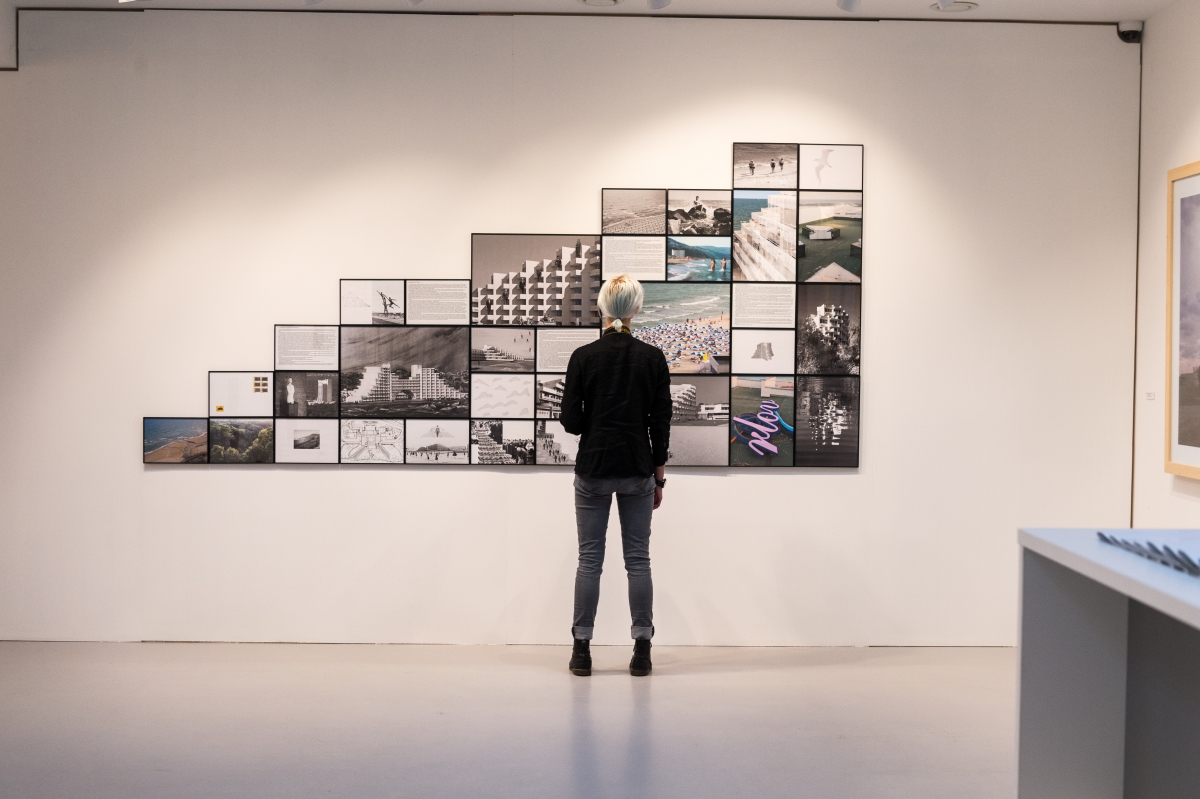
Photo by Juozas Kamenskas
Which artists are you most excited about in this show?
I don’t have a definitive answer to this question. Each of the twenty-one artists is unique. The whole process has been extremely enriching. I usually go to artists’ studios, meet them in person, or see their works in collections, galleries and museums. But this was the first time I selected works and artists via digital portfolios only. I really welcomed this challenge as I would never have had the possibility to gain access to these artists from these cities or their works otherwise. It’s been a truly inspirational experience working with all of the artists, also the organisation led by Juan Gonzalez-Posada (Project Leader, from Valladolid), all the different city organisers hosting the exhibition (Kaunas, Kristiansand and Aveiro) and all the partnering cities. I was amazed to see how everybody was so helpful and I am extremely grateful to have been part of this project.
Going back to your question, perhaps the best way to answer that is if I tell you a little bit about each artist and how their work relates to each other in a narrative. I think that will tell you why each work is unique.
Le lever du jour sur l’ocean (2012) by Davor Sanvincenti (b. 1979, Koper) creates a sensation of transcendence: Through a single shoot made on the Atlantic Ocean shore capturing the exact passage between night and day, his film translates the disquieting relationship between the human being and nature in its ungraspable dimension. The paintings Matterhorn and K2 (2014) which represent nine of the biggest mountains in the world, by Jelena Bando (b. 1988, Zagreb), also manage to provoke a similar feeling of facing something greater that transcends us. Life Cycles (2015) by Kovács Kinga (b. 1987, Harghita County) offers another relationship existing between humans and nature. Consisting of twelve tree branches held together with one fragile rope, the work questions the evolution of humankind and its influences on Earth.
The difficulty of grasping the meaning of the world also comes across in Hello Grandpa! Visual reaction to the Grandpa’s pragmatic questions about the world (2014-15), by Eva Pacalová (b. 1989, Kutná Hora). Taking a personal story between herself and her grandfather as a point of departure, the work is a reaction, both at visual and theoretical levels, to philosophical and scientific questions about the world, sky, universe, and modern technology. contacto. (2015), by Carolina Grilo Santos (b. 1993, Aveiro), also operates in the luminal space between lived stories and constructed narratives. Crossing the artist’s memories with found archival material from her grandmother, contacto. puts the focus on our human desire to preserve memories.
Through a series of co-existing dichotomies: past, present and future; reality and fiction; art and vandalism; growth and collapse, Roma Bizarra by Jorge Peligro (featuring Bizarre Dee) (2014) by Jorge Méndez a.k.a. Jorge Peligro (b. 1979, Ponferrada), is a visual translation of both a history that we did not witness, and a history that we are now making. Albena Complex (2015), by Kateřina Držková (b. 1978, Pardubice) attempts to grasp the history of this Bulgarian resort through an engaging story that makes us, as viewers, feel nostalgic even though we might not know the place. Caídos / Fallen (2015) by Ricardo Gonzaléz (b. 1957, Burgos) confronts past with present. In Million Dollar Hotel (2014) and Decade of Decay (2015), Stefano Bucciero (b. 1985, Brazil) portrays urban landscapes that could be almost anywhere in Europe, presenting themselves as post-apocalyptic scenarios.
Dichotomies between fiction and real; unknown and familiar are again brought into the work As usually they are towns – ports (2014), by Marija Šnipaitė (b. 1988, Vilnius), where personal memories emerge, and we are invaded by feelings of nostalgia. In the work of Marco Musarò (b. 1989, Gagliano del Capo) called Sovrano-disprezzo (2016) the unknown and the familiar are exist through anxieties intrinsic to humanity while Horizontok/Horizons (2016), by Zsuzsánna Fodor (b. 1986, Harghita County) presents the emotional tension of being surrounded by something that is appealing from the outside but impossible to bear from the inside. In Povilas Ramanauskas’ (b. 1987, Kaunas) painting series Horizon (2013), we are flooded with abstraction and a disorienting gaze. Horizons are powerful metaphors for human expectations, for what remains to be seen, lived and experienced, and has been investigated, represented and interpreted throughout art history.
When we face the large-scale installation Human Landscape (2015), by Tvrtko Buric (b. 1982, Bjelovar), we are compelled to enter it. Our understanding of the space is determined by the perception of our own bodies. Paradoxically, this seemingly abstract landscape is, in fact, a shattered deconstruction of what might once have been the shape of a human body. Deconstruction is a trope in art for understanding the world we live in. This is the case in Secondary Beauties (2015), by Marija Marcelionytė-Paliukė (b. 1977, Vilnius) where new forms of a series of object-containers emerge through its passage from three-dimensional objects to two-dimensional drawings. Stine Bråthen (b. 1983, Kristiansand) has work that also relates to a material-based methodology. In Legends, Processes and Spectacles (2015), she has availed a range of materials that can be linked to the domain of the architectural space. In the work of Monika Žaltauskaitė-Grašienė (b. 1975, Kaunas), our perception of time and space is challenged. Her three-metre high digital jacquard weaving Penelope’s Rags (2013), references both the mantle in the sculpture of Penelope, and the current uses of fabric, which have an impressive and almost imposing presence on the viewer.
The ideas of time and space appear as ever-changing elements in Double Layer (2011) by FAXEN art collective founded in Linz in 2004. Double Layer can be understood as a network, where the degrees of positive and negative are constantly shifting as cause and effect unite. The idea of networks being very dear to our digital era is visually translated in Cifrario (2015) of Paolo Ferrante (b. 1984, Galatina), where each sign translating existing words become encrypted, in a complex matrix of hidden relationships and meanings.
Non-linear narratives also appear in Who has more fun than people? (2014-16) by Georg Pinteritsch (b. 1986, Villach), where figures, lines and objects create a network of stories. Storytelling is a powerful tool for addressing different themes of our times as shown in the Diary of a Discussion on Education and Other Things (2015), which crosses Nita Mocanu’s (b. 1977, Arad) personal experiences and current trends of the educational system.
The title of the 56th Venice Biennale, All the World’s Futures, seems to have become a curatorial guideline for many contemporary art exhibitions. Do you think the theme of futurity is just a temporary fad, or is it indeed more essential to reflect on it than on the present or the past at this particular moment?
I agree with you that the ideas of ‘tomorrow’ and the ‘future’ have become a trend in curatorial discourse. But it is also a very natural interest, as we are not living in the best of times. I don’t think we can avoid looking back at the past and reflect on the present to envision a possible future, or a series of possible futures.
Is this just a temporary theme in contemporary curatorial discourse? I’d say it would take as long as the contemporary art discourse, which I see as interlinked with the social, economic and political spheres of life. Curators look at art, and take care of it (if we look at the epistemology of the word curating), and if it’s relevant to artists, it should be relevant to curators.
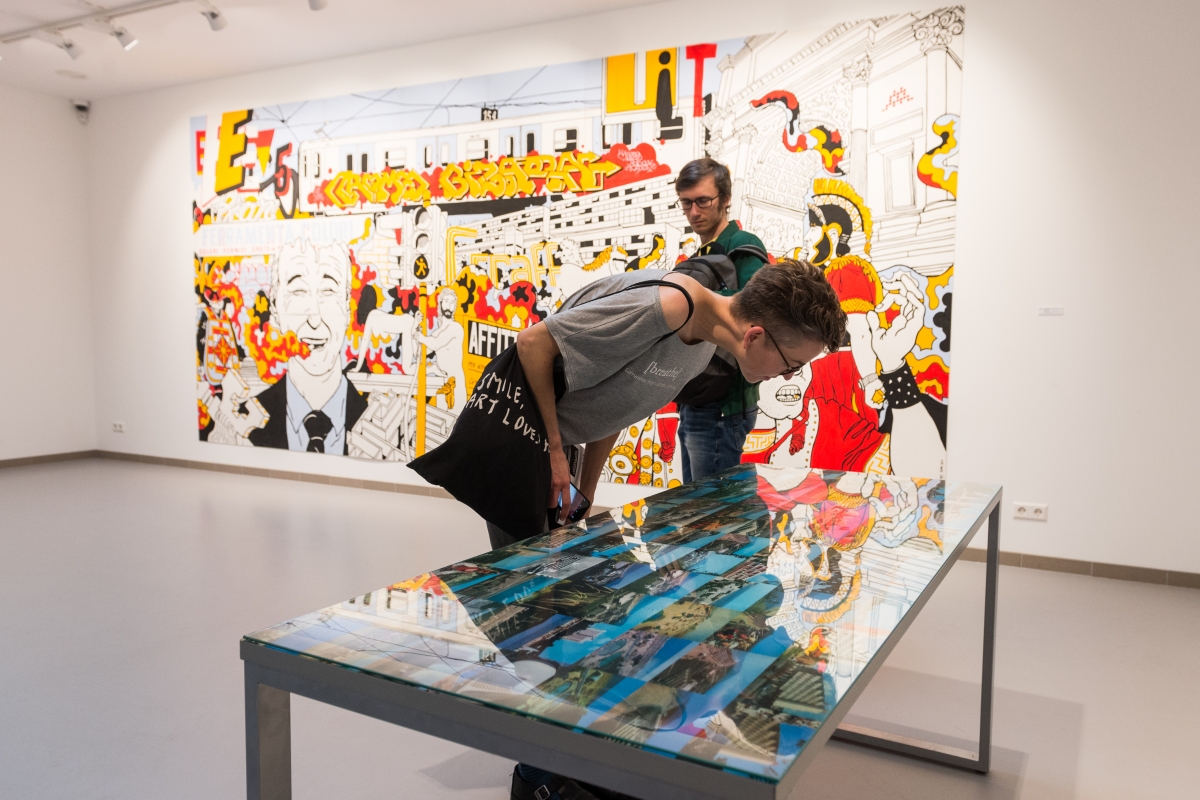
Photo by Juozas Kamenskas

Photo by Juozas Kamenskas
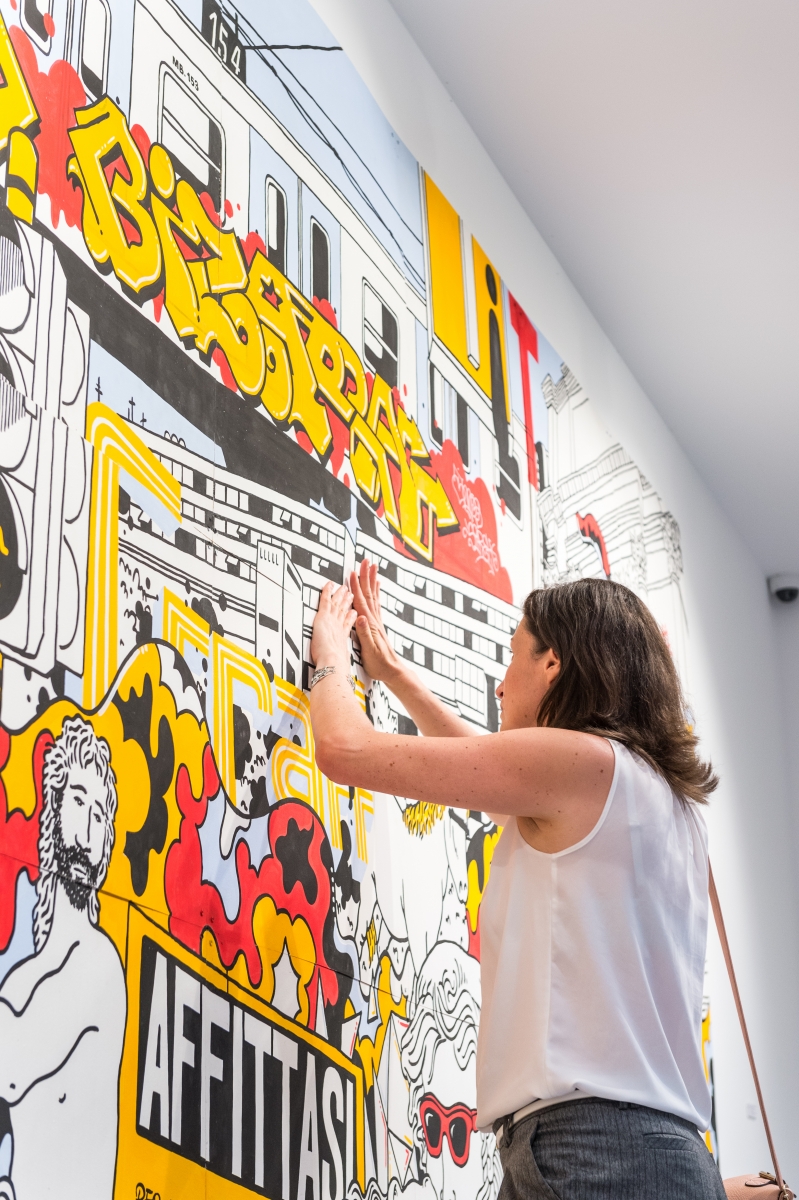
Photo by Juozas Kamenskas
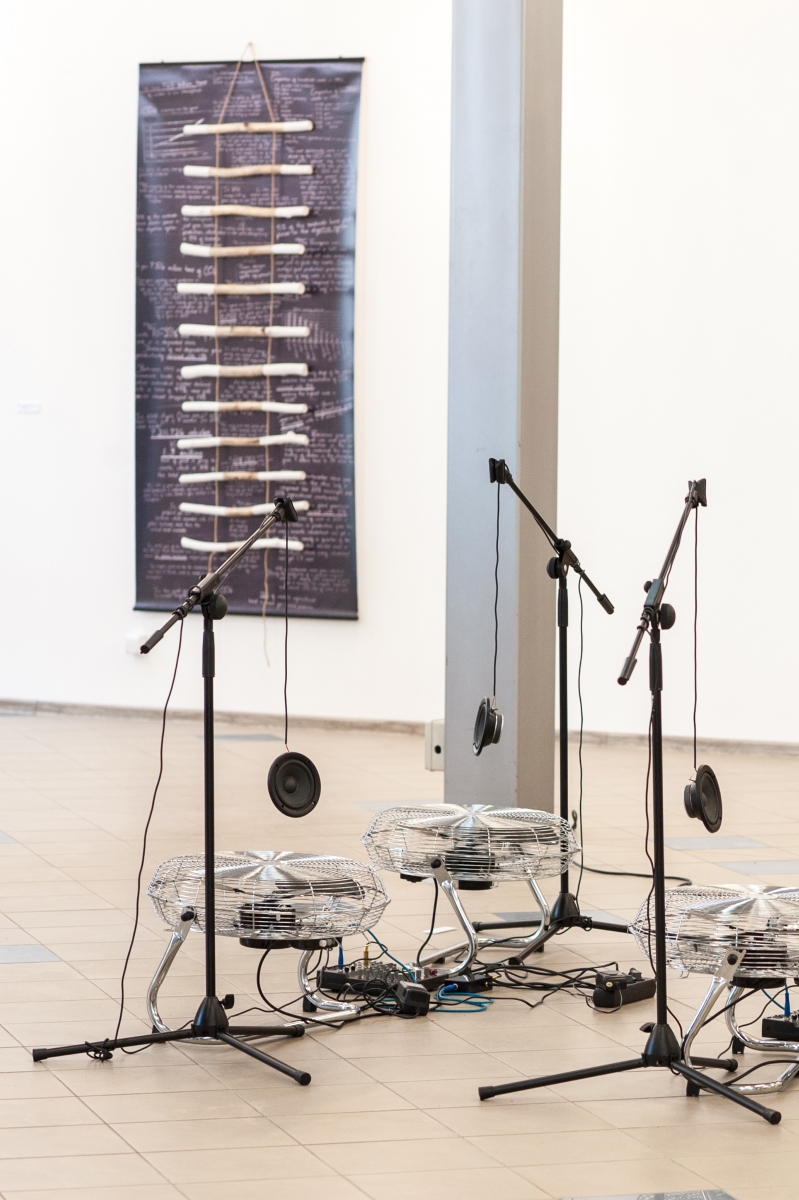
Photo by Juozas Kamenskas
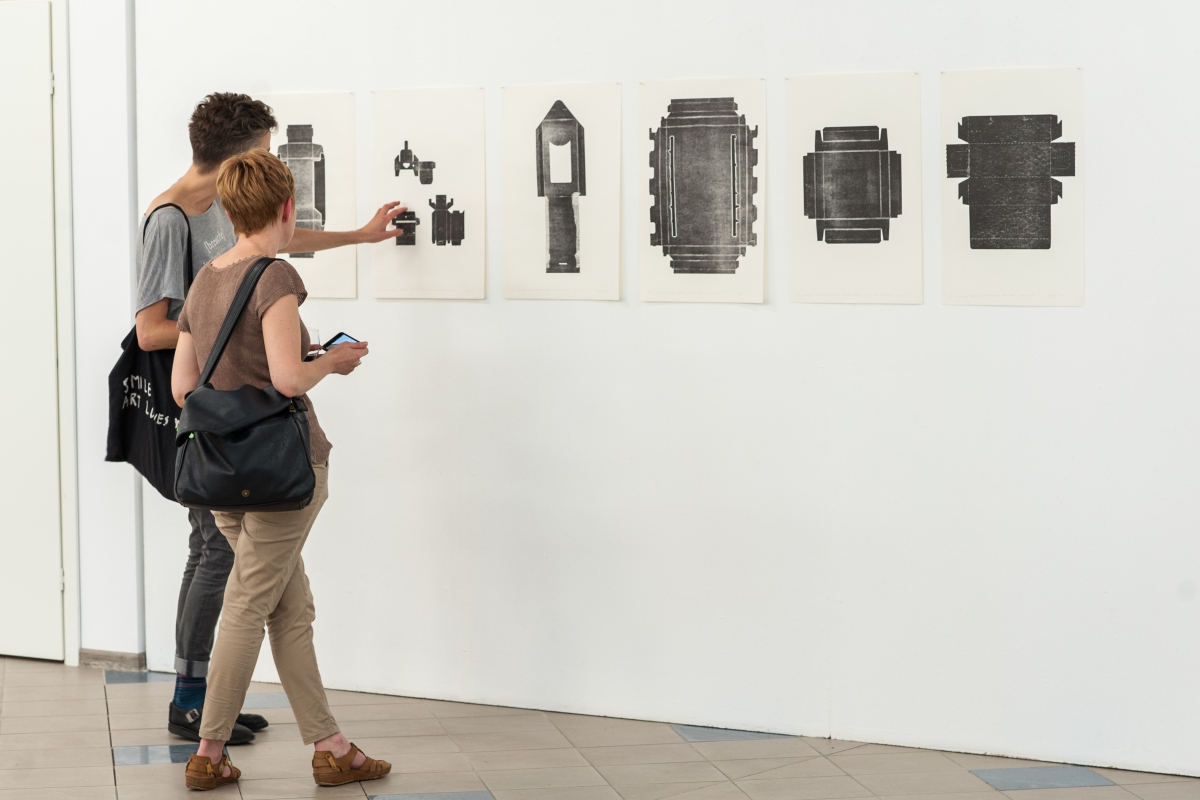
Photo by Juozas Kamenskas
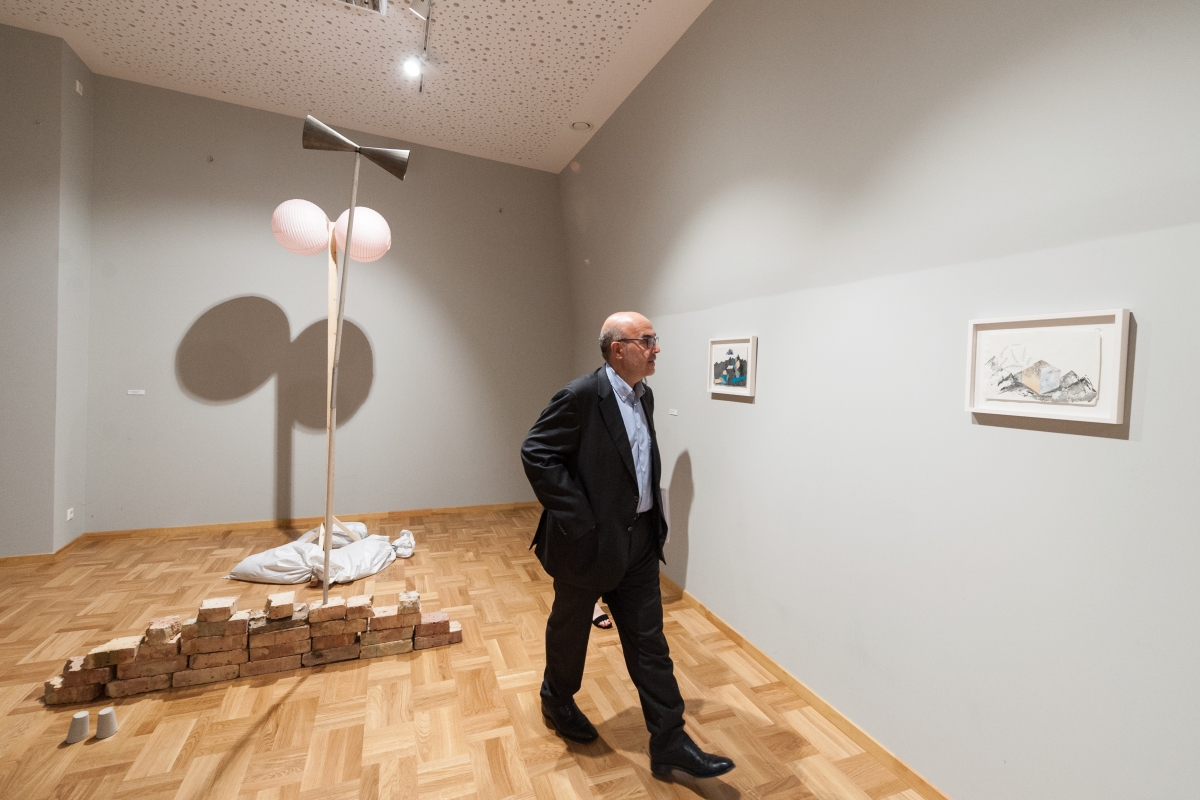
Photo by Juozas Kamenskas
________________
Artists: Marija Marcelionytė-Paliukė, Marija Šnipaitė, Povilas Ramanauskas, Monika Žaltauskaitė-Grašienė, Ricardo Gonzaléz, Jorge Méndez a.k.a. Jorge Peligro, Eva Pacalova, Katerina Drzkova, Davor Sanvincenti, Jelena Bando, Nita Mocanu, Carolina Grilo Santos, Kovács Kinga, Zsuzsanna Fodor, Stine Bråthen, Georg Pinteritsch, FAXEN Art Collective, Stefano Bucciero, Tvrtko Buric, Paolo Ferrante, Marco Musarò.
CreArt is a network of public and private institutions established in 14 European cities with experience in cultural management, deeply committed to the development of visual arts.
Notes on Tomorrow is on display at gallery Ars et mundus (A. Mapu g. 20) from 17th June – 13th August open Tuesday to Friday from 11AM to 6PM, and at gallery Meno forma (Savanorių pr. 166) from 17th June – 13th August open Tuesday to Friday from 12PM to 6PM and from 12PM to 4PM on Saturdays.
[1] Luhmann, N. (1976). “The Future Cannot Begin: Temporal Structures in Modern Society.” Social Research 43: 130-152. p.135.






























